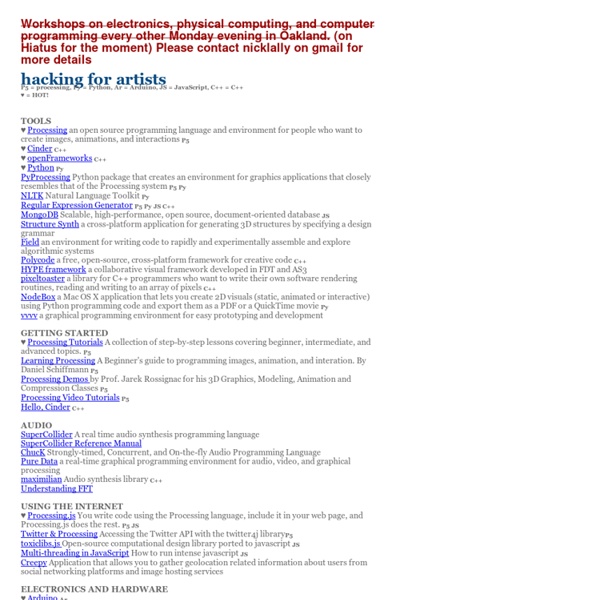



Swirling wall of moving patterns represents our thoughts By Andy Coghlan Video credit: Engram: Data Sculpture for Melting Memories from Refik Anadol WHAT resembles the wall of an exotic underground grotto is actually a work of art representing the circuitry of the brain in action. Engram / Remember is an incredible moving spectacle, forged from algorithms that convert data about brainwave activity into captivating imagery – this image shows just a single frame. The high-resolution screen starts off showing what seems to be a piece of paper ripping and folding into itself, then morphs into swirling shapes that wriggle and squirm around in an imaginary box. Artist Refik Anadol creates his “data paintings” and other works at the Neuroscape Laboratory at the University of California in San Francisco.
Generative Art “… no one, not even Benoit Mandelbrot himself [...] had any real preconception of the set’s extraordinary richness. The Mandelbrot set was certainly no invention of any human mind. The set is just objectively there in the mathematics itself. Harvest, clean cryptocurrencies for climate change Julian Oliver, one of the main writers of the ‘Critical Engineering’ manifesto, has never given up on producing artworks with a concrete side, both universally applicable and opening a space of awareness and sense of contradiction in the public. “Harvest” once more possesses these qualities. It uses a 2m wind turbine connected to a (weatherproof) computer, which is connected to the internet through a 4G uplink.
Libraries Code: ProcessingData library Source, Exported library (ZIP) During my CIID workshop I did a quick hack to make the Processing 2.0 Data API available for 1.5.1 users. The processing.data code from the 2.0 core needed only a few minor adaptations. Surreal X-Ray Photographs Reveal Hidden Beauty in Nature Our human eyes may be limited by visible light, but the work of physicist and artist Arie van 't Riet gives us a glimpse into the invisible universe around us. In exploration of nature’s hidden anatomy, Riet uses x-ray imagery on naturalistic compositions, or bioramas, created from flora and fauna. The challenging photography process requires Riet to experiment with different levels of x-ray energies to achieve the right amount of contrast in each image. Riet, who is a registered medical physicist, first became interested in x-ray photography when a colleague asked him to make an x-ray of a painting. Impressed by the results, Riet experimented with similarly thin materials starting with a bouquet of tulips. The production process begins with a black-and-white silver bromide x-ray image, which he then digitizes and inverts on his computer.
Parasitic Design - a vvvv beginners cookbook dear beginners, with the rise of generative design (and a bit late) vvvv wants to get its share of the buzz. so in its long tradition of copying the best it gives to you: Parasitic Design a series of demo-patches with detailed explanations that closely resemble the output of their originals which are the processing-examples that come with the which btw. is available in english and french now! over the course of the next few weeks we'll release most of the examples of their P chapter (>60) reimplemented as vvvv patches for your studying pleasure. they work nicer with the book at hand but also without the book you should be able to learn by just inspecting the patches.
New York’s MoMA Acquires the First Ever (Very Pixelated) Emoji As of this morning, the Museum of Modern Art in New York has acquired the original 176 emoji for its permanent collection. Designed by Shigetaka Kurita for cell phones and pagers in 1999, they aren’t exactly the bouncy expressions that make today’s communication what it is. They’re more typographical, for one thing, and they only have six colors—red, orange, lilac, grass green, royal blue, and black. At just 12 pixels by 12 pixels, the glyphs might seem rudimentary (especially beside beer steins, eggplants, and piles of happy poop), but look closer and you’ll find that they’re remarkably efficient communicators. “They’re so incredibly beautiful and expressive, even though the technology at the time was so limited,” says Paola Antonelli, MoMA’s senior curator in the department of architecture and design. More than that, early emoji were also a marketing tool.
Winged Insects Made From Old Computer Circuit Boards And Electronics Our society discards a lot of electronics, as they are rendered obsolete almost every day, but artists like Julie Alice Chappell, based in the UK, are there to pick up the pieces and turn them into beautiful recycled art. In her case, she turns old computer circuit boards and electronics into beautiful winged insects in a series called “Computer Component Bugs.” Show Full Text “With all their tiny components, complex circuitry and bright metallic colours I cannot help but compare them to the detailed patterns we see when we look at nature up close,” Chappell wrote in an article on permaculture.co.uk. “I view the miniature circuit boards with the same curiosity and amazement as I view the natural world.
hacking for artists P5 = processing, Py = Python, Ar = Arduino, JS = JavaScript, C++ = C++ ♥ = HOT! by agnesdelmotte Jul 26